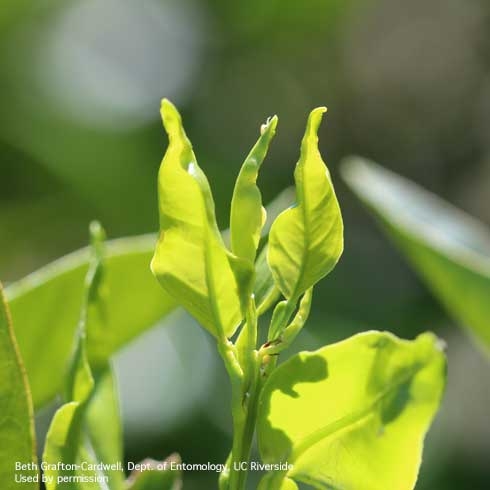Question:
I have heard of a disease that has devastated citrus in Florida. Is it in California, and if so, how can we protect the citrus trees in our yard?
Answer:
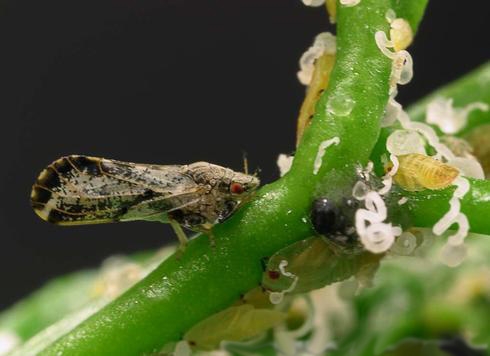
The disease you are referring to is called Huanglongbing—HLB for short—or citrus greening disease. The HLB disease has decimated the Florida citrus industry, causing billions of dollars in economic damage and thousands of lost jobs. Within four years of its arrival, 60,000 acres of trees were affected with HLB.
The bacterium is spread by the Asian citrus psyllid, Diaphorina citri. There is no cure for the disease; once the tree is infected, it can die in as little as 5 years. The Asian citrus psyllid (ACP) arrived in Southern California from Mexico in 2008. The ACP has now been found in many parts of California, including Southern CA, the Central Coast, the San Joaquin Valley, and the Bay Area. The disease was first found in southern California in 2012. The only way to stop the spread of the disease is to stop the spread of the psyllid. Host plants are all citrus species
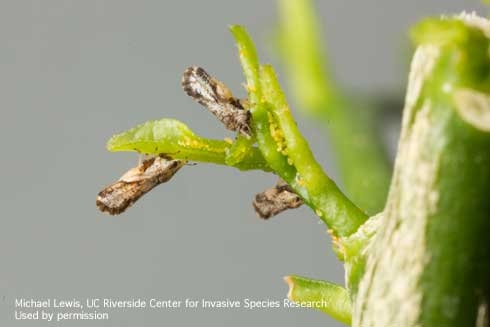
and ornamental plants in the Rutaceae family (e.g. box orange, Indian curry leaf, and orange jasmine).
The best thing a home gardener can do toprevent the spread of HLB is to obey quarantines set in place and to keep a lookout for the insect and report it to the California Department of Food and Agriculture (CDFA) Exotic Pest Hotline at 1-800-491-1899. San Joaquin county is currently under quarantine for ACP.
Here's what to look for:
The adult psyllid is about the size of an aphid, 1/6 to 1/8 of an inch long. It has mottled brown wings with a clear margin that breaks up the pattern, red eyes, and a pointed rear end. The short antennae have black tips with
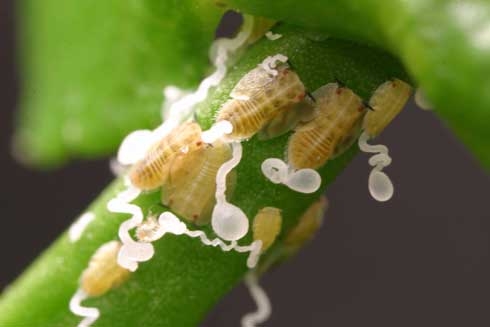
two small, light brown spots on the middle segments. It feeds at a 45-degree angle with its tail end in the air. It lays its yellow or orange, almond-shaped eggs on new plant growth, nestled in the crevices of unfolded leaves. The nymphs are wingless and will molt four times before becoming an adult. They feed on the young soft leaf tissue of the plant. As they feed, they produce a large amount of sugary liquid or “honeydew.” They also produce white, waxy, curly tubules with a bulb on the end to help clear the sugary waste from their bodies. This is unique to the Asian citrus psyllid.
Trees should be inspected monthly and especially during periods of active plant growth or "flushing." Due to the small size of the psyllid, using a magnifying glass or hand lens will make inspection
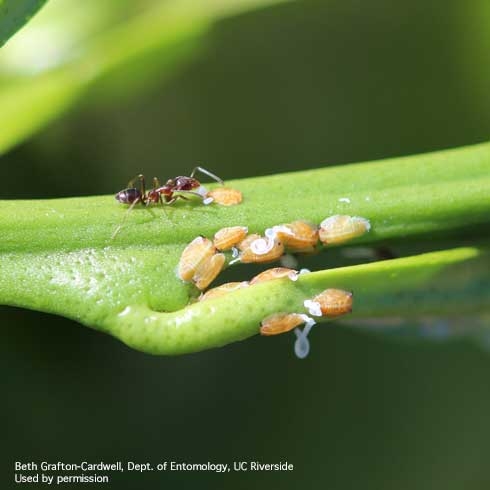
Encourage beneficial insects that eat the psyllid, including lady beetle adults and larvae, syrphid fly larvae, lacewing larvae, and minute pirate bugs. Some spiders, birds, and other general predators also feed on adult psyllids.
Don't move citrus fruit or plants outside your area. The main way the insect spreads is from people transporting infested plant material. Buy citrus trees only from a reputable, licensed nursery. Double-bag clippings from citrus and other host plants or allow them to dry out thoroughly prior to disposal to avoid moving the psyllid and HLB-infected plant material.
References:
https://www.cdfa.ca.gov
http://californiacitrusthreat.org
http://www.ipm.ucdavis.edu/PMG/PESTNOTES/pn74155.html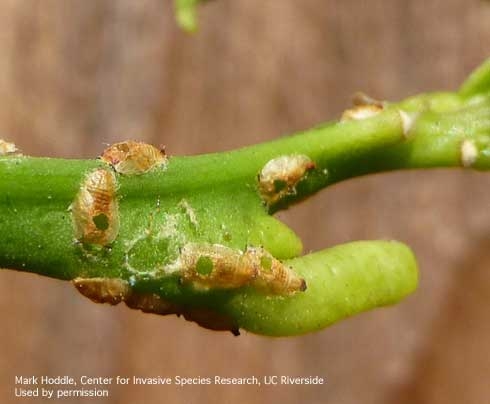
https://ucanr.edu/sites/ACP/
https://cisr.ucr.edu/invasive-species/asian-citrus-psyllid
https://anrcatalog.ucanr.edu/pdf/8205.pdf
